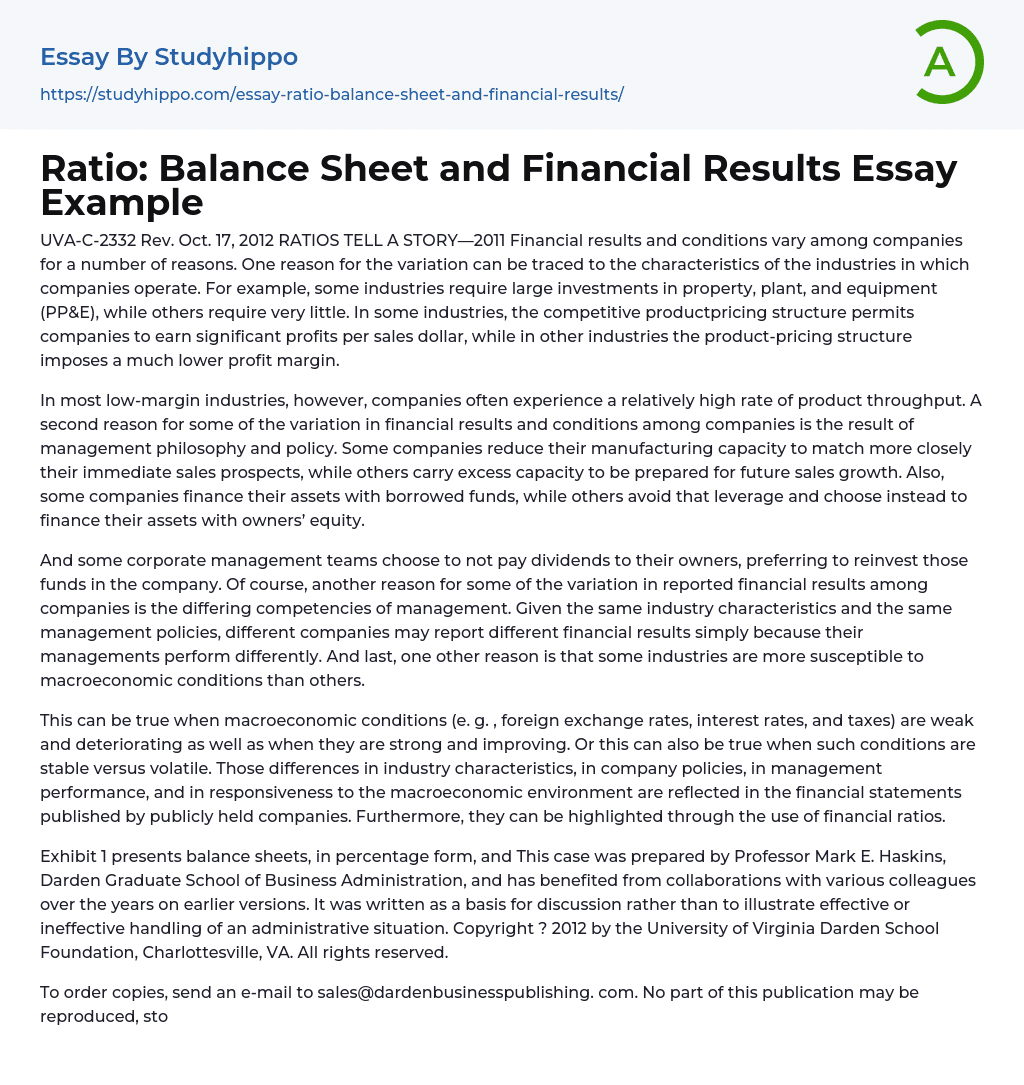Financial results and conditions vary among companies for a number of reasons. One reason for the variation can be traced to the characteristics of the industries in which companies operate. For example, some industries require large investments in property, plant, and equipment (PP&E), while others require very little. In some industries, the competitive productpricing structure permits companies to earn significant profits per sales dollar, while in other industries the product-pricing structure imposes a much lower profit margin.
In most low-margin industries, however, companies often experience a relatively high rate of product throughput. A second reason for some of the variation in financial results and conditions among companies is the result of management philosophy and policy. Some companies reduce their manufacturing capacity to match more closely their immediate sales prospects, while others carry excess capacity to be prepar
...ed for future sales growth. Also, some companies finance their assets with borrowed funds, while others avoid that leverage and choose instead to finance their assets with owners’ equity.
And some corporate management teams choose to not pay dividends to their owners, preferring to reinvest those funds in the company. Of course, another reason for some of the variation in reported financial results among companies is the differing competencies of management. Given the same industry characteristics and the same management policies, different companies may report different financial results simply because their managements perform differently. And last, one other reason is that some industries are more susceptible to macroeconomic conditions than others.
This can be true when macroeconomic conditions (e. g. , foreign exchange rates, interest rates, and taxes) are weak and deteriorating as well as whe
they are strong and improving. Or this can also be true when such conditions are stable versus volatile. Those differences in industry characteristics, in company policies, in management performance, and in responsiveness to the macroeconomic environment are reflected in the financial statements published by publicly held companies. Furthermore, they can be highlighted through the use of financial ratios.
Exhibit 1 presents balance sheets, in percentage form, and This case was prepared by Professor Mark E. Haskins, Darden Graduate School of Business Administration, and has benefited from collaborations with various colleagues over the years on earlier versions. It was written as a basis for discussion rather than to illustrate effective or ineffective handling of an administrative situation. Copyright ? 2012 by the University of Virginia Darden School Foundation, Charlottesville, VA. All rights reserved.
To order copies, send an e-mail to sales@dardenbusinesspublishing. com. No part of this publication may be reproduced, stored in a retrieval system, used in a spreadsheet, or transmitted in any form or by any means—electronic, mechanical, photocopying, recording, or otherwise—without the permission of the Darden School Foundation.
Be prepared to give the reasons for your pairings, citing the data that seems to be consistent with the characteristics of the industry you selected. Ours is not a perfect world, however, and for our class discussion, it will be helpful if you will also identify those pieces of data that seem to contradict the pairings you have made. Please note that using the data available here, you will find it difficult to identify those companies whose financial results differ because of management policy and competence.
- Asset essays
- Capital market essays
- Day Trading essays
- Depreciation essays
- Discounted Cash Flow essays
- Foreign Direct Investment essays
- Funds essays
- Futures Trading essays
- Internal Rate Of Return essays
- Million essays
- Revenue essays
- Accountability essays
- Accounting Software essays
- Accounts Receivable essays
- Auditor's Report essays
- Balance Sheet essays
- Cash essays
- Cash Flow essays
- Costs essays
- Financial Audit essays
- Internal Control essays
- International Financial Reporting Standards essays
- Management Accounting essays
- Principal essays
- Tax essays
- Auction essays
- Balanced Scorecard essays
- Battle essays
- Business Plans essays
- Expense essays
- Income essays
- Intranet essays
- Maintenance essays
- Net Income essays
- Security Guard essays
- Simulation essays
- Singapore Airlines essays




